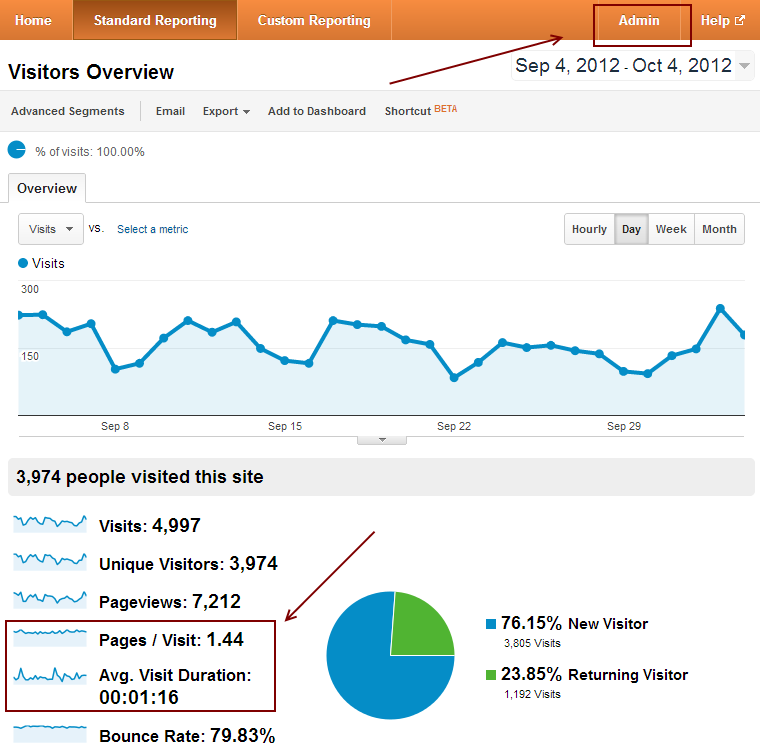Revealing the Blind Spots: Understanding What Google Analytics Goals Can not Measure
In the world of digital analytics, Google Analytics stands as a powerful device for tracking and evaluating online user communications. Amidst its robust abilities, there exist blind places that commonly evade measurement. what data is google analytics goals unable to track. Recognizing what Google Analytics goals can not determine is essential for obtaining a comprehensive sight of user habits and engagement. As we explore the intricacies of these dead spots, we reveal an intricate web of uncharted territories that hold valuable understandings right into individual actions and inspirations, tough standard knowledge and shedding light on the constraints of our data-driven understanding.
Customer Behavior on External Platforms
Recognizing just how customers communicate on outside platforms is essential for optimizing on the internet methods. Outside platforms, such as social media sites networks, reference sites, and on the internet forums, play a considerable duty in driving website traffic to a business's site. By assessing user behavior on these systems, businesses can gain beneficial insights right into the performance of their advertising initiatives and the preferences of their target audience.
One key facet of user behavior on exterior systems is the reference source. By tracking where the individuals are originating from, companies can determine which systems are driving one of the most traffic to their website. This info can help firms designate their sources much more effectively, concentrating on the platforms that produce the most effective results.

Offline Interactions and conversions
Examining user habits on outside systems offers useful understandings right into on-line strategies; nevertheless, taking into consideration offline conversions and communications is similarly vital for an extensive understanding of a company's general performance. While Google Analytics excels at tracking on the internet interactions, it drops brief in catching the complete client journey that usually consists of offline touchpoints. Offline conversions, such as in-store purchases or phone inquiries, play a significant function in lots of companies' success. Ignoring these interactions can cause an altered view of the performance of advertising campaigns and general company efficiency.

Acknowledgment Beyond Last Click
When diving into the realm of electronic advertising and marketing analytics, it comes to be important to look past the single touchpoint of the last click for a much more detailed understanding of acknowledgment. While Google Analytics supplies important understandings into user habits, depending exclusively on last-click acknowledgment can be limiting - what data is google analytics goals unable to track. Acknowledgment versions that exceed the last click use an extra nuanced view of the customer useful source journey, thinking about all the touchpoints that bring about a conversion
Acknowledgment past the last click allows online marketers to designate credit to various interactions along the conversion path, why not try these out offering a more clear image of the performance of different marketing channels. By discovering multi-touch attribution designs such as linear, time degeneration, or position-based attribution, businesses can much better designate their advertising budget plans and maximize their techniques for optimal impact.
Comprehending the impact of each touchpoint in the conversion process is vital for making educated choices and optimizing ROI. By welcoming attribution beyond the last click, organizations can get deeper insights into customer habits and tailor their marketing efforts extra efficiently.
Cross-Device and Cross-Browser Tracking

In a similar way, cross-browser monitoring matches cross-device monitoring by capturing user actions as they change in between various web browsers. Understanding how customers interact with sites on numerous internet browsers can aid marketing professionals maximize their on the internet experiences to ensure uniformity and functionality throughout various platforms.
Qualitative Data and User Intent
Comprehending individual intent through qualitative information analysis is essential for developing targeted digital advertising and marketing strategies that resonate with the demands and preferences of the target audience. Qualitative data offers understandings into the 'why' behind individual actions, shedding light on inspirations, emotions, and preferences that quantitative information alone can not record. By examining customer responses, comments, and communications, marketers can discover useful info regarding customer intent, allowing them to customize their messaging, content, and offerings to much better line up with what their target market is looking for.
Qualitative information likewise assists in comprehending the context in which users engage with an internet site or application. This contextual understanding allows marketing professionals to develop even more appropriate and tailored experiences, ultimately driving greater interaction and conversion prices. By delving right into individual intent with qualitative data evaluation, companies can obtain a deeper understanding of their target audience, causing a lot more efficient marketing methods that satisfy customers' needs and expectations.
Conclusion
Finally, Google Analytics objectives have restrictions in gauging individual habits on exterior systems, offline conversions, attribution past last click, cross-device and cross-browser tracking, and qualitative data connected to individual intent. what data is google analytics goals unable to track. It is vital for services to be knowledgeable about these dead spots in order to supplement their data evaluation with other tools and methods to obtain a much more detailed understanding of my company their audience and boost their general electronic advertising and marketing strategies
By evaluating individual actions on these systems, companies can gain important understandings right into the efficiency of their marketing efforts and the preferences of their target audience.
Examining individual actions on outside systems gives valuable insights into on-line methods; however, considering offline conversions and communications is just as imperative for a detailed understanding of a company's general performance.In digital advertising analytics, moving past last-click acknowledgment to check out cross-device and cross-browser monitoring is necessary for acquiring an alternative understanding of customer interactions across various systems and tools. By assessing customer comments, remarks, and interactions, marketing experts can discover beneficial information about user intent, allowing them to tailor their messaging, material, and offerings to better straighten with what their target market is seeking.
By diving right into customer intent with qualitative information analysis, businesses can gain a deeper understanding of their target audience, leading to extra efficient marketing approaches that fulfill customers' demands and assumptions.